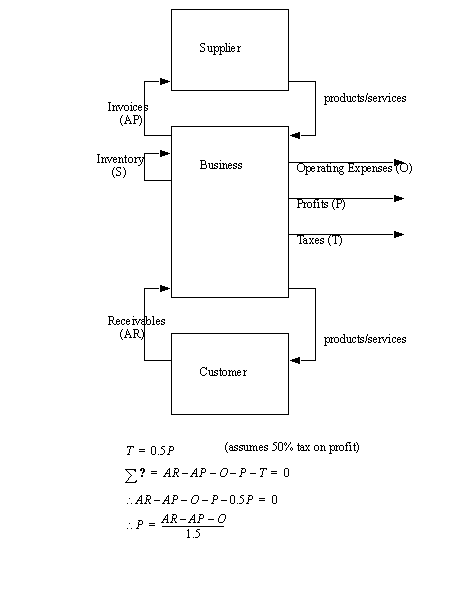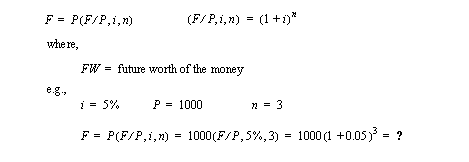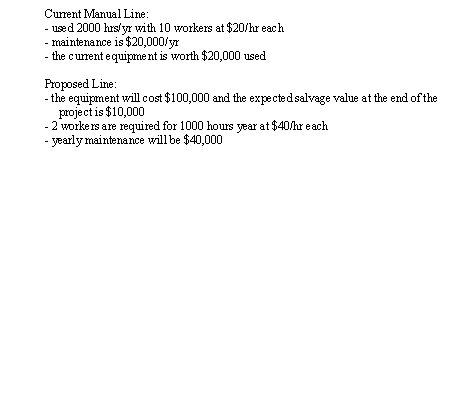
• The primary object of a public corporation is to generate the maximum amount of profit possible. A simple model is shown below.

• Operating expenses include a number of factors such as,
- Depreciation on capital equipment
• When cash flow occurs over a number of years it is often shown with cash flow diagrams.

• When considering the economic value of a decision, one method is the payback period.

• Simple estimates for the initial investment and yearly savings are,

• There are clearly more factors than can be considered, including,
• The simple models ignore the conversion between present value and future value. (ie, money now is worth more than the same amount of money later)

• The future value of money can be evaluated using,

• Quite often a Rate of Return (ROR) will be specified by management. This is used in place of interest rates, and can include a companies value for the money. This will always be higher than the typical prime interest rate.
• So far we haven’t considered the effects of taxes. Basically corporate taxes are applied to profits. Therefore we attempt to distribute expenses evenly across the life of a project (even though the majority of the money has been spent in the first year). This distribution is known as depreciation.

• Methods for depreciation are specified in the tax laws. One method is straight line depreciation.

• Another methods is the accelerated cost recovery (ACRS) method that is based on US tax law. A similar version is the Modified ACRS (MACRS) system.

• The ’book value’ for an item is calcuated as,

• Rate of Return (ROR) Analysis -

• Present worth analysis shifts all of the future costs and incomes into a present day sum.
• Benefit Cost Analysis for chosing between alternatives, All costs must be converted to the present values.



• Consider an assembly line that is currently in use, and the system proposed to replace it. The product line is expected to last 5 years, and then be sold off. The corporate tax rate is 50% and the company policy is to require a 17% rate of return. Should we keep the old line, or install the new one?
